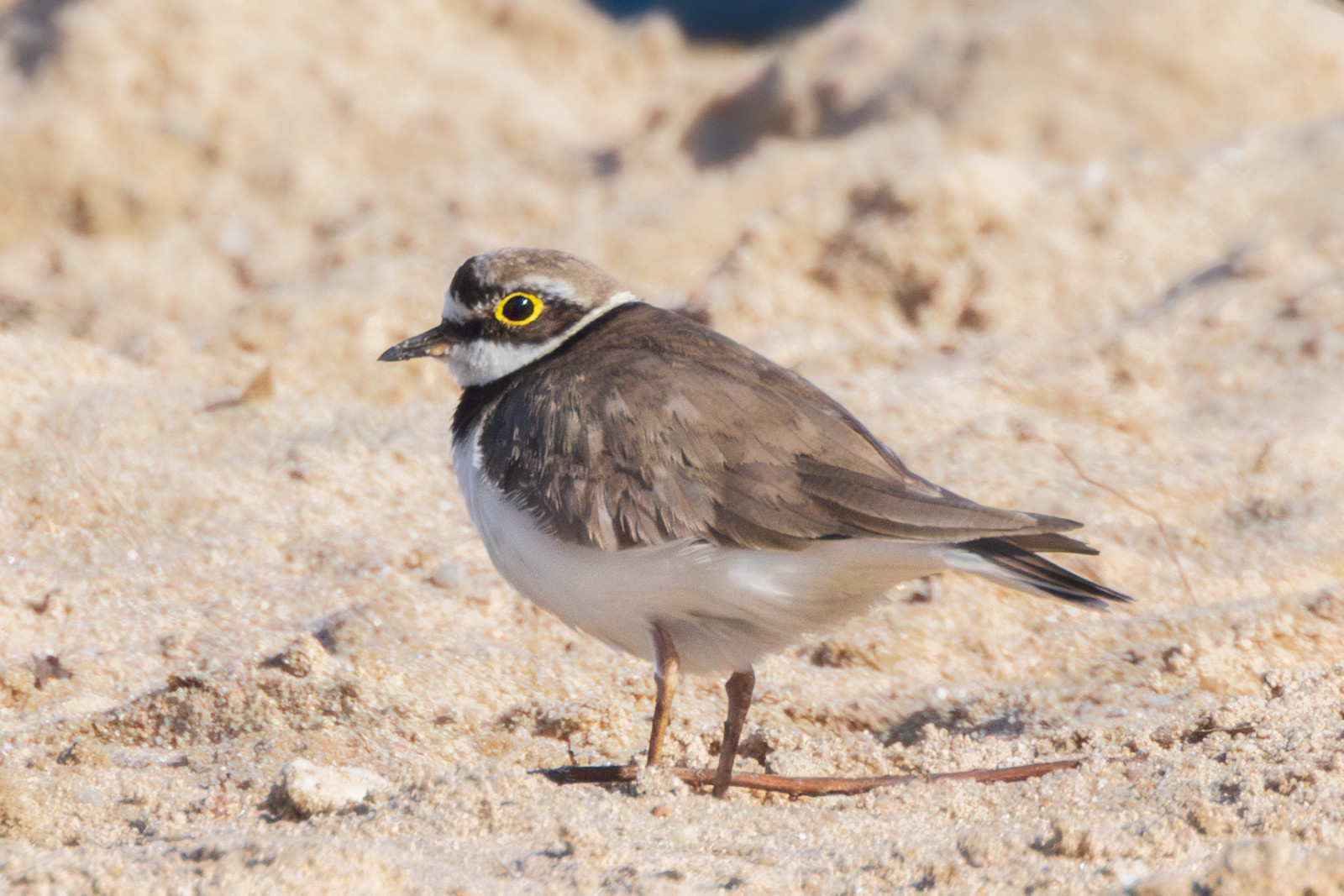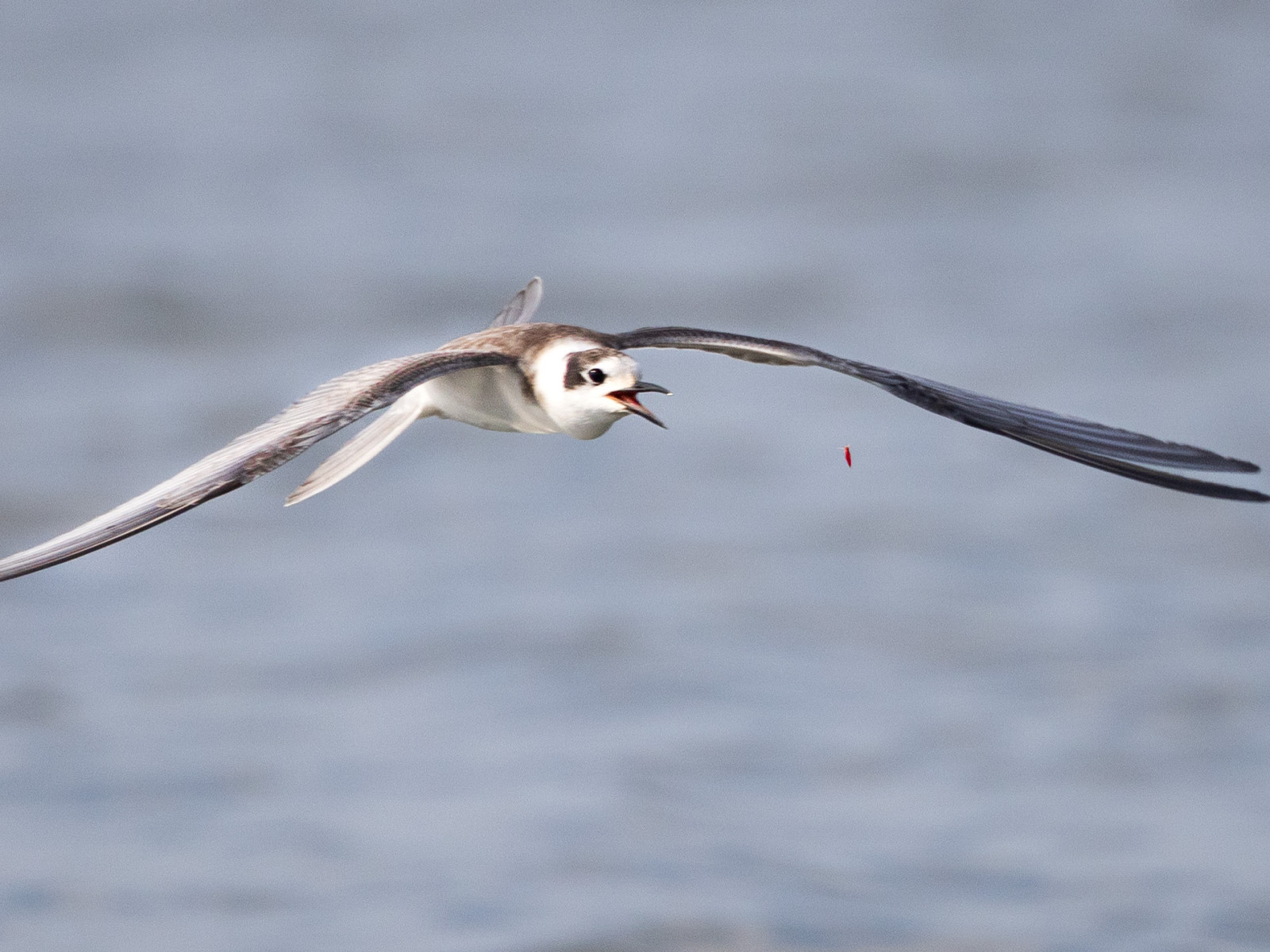Beschreibung
The Altmühlsee is an artificial lake in Bavaria, created in the 1970s. It serves as a water reservoir and a destination for tourism. The Vogelinsel in the northeast and the extensively managed areas around it, particularly the Wiesmet, as well as the water bodies of the Seenland, attract numerous waterbirds that can also be observed on the lake.
In winter, when the water is not frozen, it becomes a popular area for Gänsesäger, Haubentaucher, a group of Kanadagans, as well as Tafelente, Reiherente, and Pfeifente. Among these, notable guests sometimes appear. In some years, Zwergsäger visit, and Schellente are regularly observed. Mittelsäger, Prachttaucher, Sterntaucher, and even Eistaucher have been recorded, although the chances of seeing those are better at Großer Brombachsee. Silberreiher appear along the shore in winter, and among the numerous Mittelmeermöwe and fewer Steppenmöwe, some Sturmmöwe can be discerned.
Spring and autumn migrations bring exciting visitors. The Nachtreiher, which breeds on the Vogelinsel, can sometimes be observed in the bushes that line the rivers around the lake. Seidenreiher sightings are possible, too. Trauerseeschwalbe regularly hunt over the lake in April and May, and especially in late August and early September. Among these, the very similar, but rarer Weißflügel-Seeschwalbe and Weißbart-Seeschwalbe are occasionally noted. Küstenseeschwalbe has been reported in some years. Zwergmöwe stay here in those months as well. From late August, few waders, including Alpenstrandläufer and rarely the Sanderling, are occasionally feeding on the sandy beaches. Here they can be observed from a shorter distance than on the Vogelinsel itself. Ohrentaucher and Samtente are scarce visitors mainly in late autumn, sometimes through to the winter months.
Rarities observed here include Dreizehenmöwe, Eisente, Thorshühnchen, and Odinshühnchen. Schmarotzerraubmöwe has been recorded four times, most recently in 2016. The exceptional sighting of a Präriemöwe in spring 2023 proves that the lake may always hold surprises.
Details
Zugang
Individual observation points can be reached on foot from the parking areas of the respective lake centers (Seezentren): The northeastern shore (1) from Seezentrum Muhr, the southern shore and the outlet structure (2) from Seezentrum Schlungenhof or the parking area at Höhe. These spots offer the best chances for observing gulls and terns. The western shore can be accessed from Seezentrum Wald (3). Further north, the northern edge of the Vogelinsel is visible; year-round, Seeadler can be spotted in the trees, and Fischadler during the warmer months. Much better than arriving by car is to cycle around the lake, possibly following an early morning visit to the Vogelinsel. The path around the lake is only accessible by bike and on foot, cars are prohibited. It is wheelchair-accessible.
Paddle boats can be rented at the lake centers (please respect the nature reserve boundary of the Vogelinsel!). Motorboats are prohibited on the lake.
Terrain und Habitat
Vereinzelte Bäume und Büsche , See , StrandBedingungen
FlachRundweg
JaIst ein Spektiv nützlich?
JaGute Beobachtungszeit
GanzjährigBeste Beobachtungszeit
Winter , Frühjahrszug , HerbstzugRoute
Normaler Weg , asphaltierte StraßeSchwierigkeitsgrad der Tour
EinfachErreichbarkeit
zu Fuß , Fahrrad , RollstuhlBeobachtungshütten oder -türme
NeinZusätzliche Informationen
The lake is used all year round for various sailing sports, which usually causes little disturbance to the birds. In summer it was a popular bathing area. However, due to phosphorus inputs from agriculture (40 tonnes per year) and climate change-induced warming of 4°C, cyanobacteria are increasingly spreading, making swimming impossible. It remains to be seen what impact this will have on bird life.
In winter, the lake surface may be frozen. Then it may be worth searching the surrounding fields for feeding Graugans, Bläßgans, Großer Brachvogel, and even rarer visitors.





